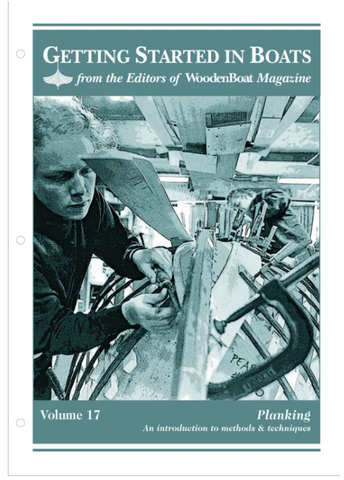About Boatbuilding Plans
We are an agent for many different designers, and we pay them royalties on each plan sold.
When you purchase a plan from us, you receive a cover letter explaining you have rights to build one boat from the plan set. If you want to build more of the same boat, you would need to purchase more plans. To build extra boats without paying for the additional plans is not only unfair to the designer, but it's bad bad karma... not something to be trifled with.
Plans typically do not come with instructions, step-by-step how-to info. Instead they are drawings to build from, much like a set of house plans. Some plans will have a bit of "supplemental" material, provided by the designer to help you along.
Want to understand more about what you're looking at when viewing plans? Try GETTING STARTED #15.
Plans vary greatly in amount of detail. We have plan sets with as few as one sheet (Asa Thompson Skiff) and as many as 35 (Marisol Skiff). Most plans have 4-8 sheets, and they do have enough information to build from. Some plans will include a complete "here's what you need" materials list, but most don't. Other plans give you a basic materials list, but, you still need to figure out how much, best way to work it out for least amount of waste. You'll also notice that many plans nest many drawings on the plan page... a nice mark of frugality on the designer's part. Plans page sizes vary as well, but typically they're 2-3' wide, and 3'-4' long. We typically ship plans rolled, but, do fold plans if they are too large for some shipping methods (especially going outside the US). Plans are considered "black line drawings", as opposed to the blueprint term, which really was blue background, and white lines. These plans are created to be working drawings, so they are not fancy. The paper is not super-heavy weight and therefore can easily tear, crinkle. Plans we sell should not be considered suitable for framing/display. The paper will yellow, the lines will fade. Best to keep them rolled-up when not in use.
Planking: there are many ways a hull can be built. Carvel, Lapstrake, Stitch-n-Glue, Cold-
Molded, Strip, and more. To get an understanding see GETTING STARTED #17.
Lofting: some plans don't require lofting because they include full-sized mold patterns... typically half a mold, so you just flop it to mirror the other side. (Tip: even if plans have the full mold you might be better off using half and flopping.) Full sized patterns don't include planks... the paper would be too long. "You're not making a dress" is the common refrain. Paper is tricky stuff, as it can physically change size / stretch, with humidity, so you'd not really want to rely on a very large / long pattern. Nor would you want to pay for all that paper. Hence the boats that don't need lofting tend not to be too beamy. If you are looking for info about lofting, a good place to start is GETTING STARTED IN BOATS #18, which is an 8 page download about Lofting. Several folks have told us it was that Getting Started that helped them wrap their head around the concept. Typically, offsets are in FEET, INCHES, and EIGHTHS. So, an offset number 4-11-5 would be 4 feet 11 and 5/8 inches. If there is a + sign, it means a 1/16" more ( a minus sign would be 1/16" less), so the number4-11-5+ would be 4 feet, 11-11/16 inches... as 5/8 = 10/16, + 1/16 = 11/16.
Modifications to plans are made at your own risk. We never advise on these questions and will simply suggest you seek the advice of the designer or a naval architect if you want to change what has been drawn.
If ordering Digital plan sets: These files are in PDF format. Some designs will have just a single page needed to be printed on large paper... typically if they had full-sized mold patterns. Other pages could be printed on letter or tabloid size paper (A4, A3), if you want to save printing costs. You'll see a measurement on pages that have full-sized drawings, so your local print shop will just need to print to that size. You have three attempts to download (you should need just one), be sure to save to your local drive. You can put the file on a flash drive, for your print shop.
Study plans will frequently mention alternative construction. When indicating cold-molded, strip-planked, or some other method when the plan construction is something else... glue-lap-ply for example, that alternative construction is not something detailed in the plans. It's simply an acknowledgment that, if you know what you're doing, you could be able to chose an alternative construction method, but you're on your own.
Hope that helps.



